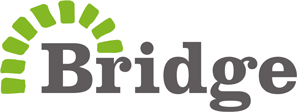Questions
- Why does Bridge support national governments to deliver education?
- Why not just invest in traditional public schools?
- If Bridge is mission driven, why isn’t it set up as a charity?
- Does Bridge make a profit from poor communities?
- How can Bridge claim to reach the poorest when the poorest cannot pay?
- Is there independent evidence to prove Bridge schools are delivering good educational results?
- Are Bridge teachers qualified?
- Why does Bridge use teacher guides?
- Are all Bridge academy buildings safe?
- Does Bridge teach the national curriculum of individual countries?
- Are Bridge Schools open in Uganda?
1. Why does Bridge support national governments to deliver education?
In many developing countries, millions of children are not in school, and many of those who are, are receiving an inadequate education. Specifically, the Education Commission estimates there are 263 million children and young people not in school and a further 330 million in school but not learning. In addition, UNESCO states that an extra 69 million teachers are needed to achieve the UN education goals for 2030. There is a real need that must be addressed urgently.
Bridge supports governments both directly and indirectly. The vast majority of Bridge supported schools are government schools. We have a range of partnerships including, public private partnerships, technical service delivery partnerships and infrastructure partnerships. We respond the needs and requests of individual governments as long as we can deliver quality education to underserved communities.
In addition, Bridge runs affordable community schools. We believe there should be truly great, truly free public schools. However, in reality, this is far from being the case. So, in countries where we don’t have direct government partnerships we’re helping to address the huge education imbalance between what is available and what is needed right now through community schools.
By demonstrating that high-performing schools are possible even on a developing country’s limited budget, we’re empowering governments and others to make informed decisions about how to improve learning outcomes for children. Far from acting separately from government or taking government “off the hook,” in these communities we’re an education partner, helping governments improve schools and teachers.
2. Why not just invest in traditional public schools?
We do. Enabling public sector transformation is critical and the majority of the schools that Bridge supports are public schools. In Liberia and Nigeria we’re improving public schools and/or government teaching through Public Private Partnership (PPP) models, and we’re also supporting public schools through other partnerships in Nigeria and India.
The World Bank, the UN, and The Education Commission, among other global institutions, have stated that PPPs are integral to the delivery of the Sustainable Development Goals (SDGs) and, in particular, quality education for all. In fact, DFID and USAID have both published education frameworks that advocate the use of the private sector to improve education systems.
Bridge and other social enterprises are investing heavily in developing innovative, affordable solutions to address educational shortcomings in low and middle income countries. There is a global learning crisis now, and programmes and innovations that can improve learning outcomes for children, both through direct and indirect government partnerships, should be encouraged to prevent another generation of children missing out.
3. If Bridge is mission driven, why isn’t it set up as a charity?
Bridge is designed to be both scalable and sustainable. Thanks to this, we’ve been able to attract investors that governments and NGOs cannot access. To date, we’ve raised over USD $140 million of investment to bring high-quality schools to some of the most underserved parts of the world.
We believe investment capital – when it’s deployed toward addressing one of the world’s most pressing problems – is a positive force in development.
4. Does Bridge make a profit from poor communities?
No. To date, we have never made a profit. We have a long-term investment model and all our partners and investors are committed to tackling the global education crisis in a sustainable and scalable way.
We’ll only ever make a profit if we’re successful in delivering a high-quality, affordable education to millions of children around the world.
5. How can Bridge claim to reach the poorest when the poorest cannot pay?
We locate our schools in some of the poorest communities in some of the world’s poorest countries.
The vast majority of Bridge supported schools are free to attend. In countries such as Liberia and Nigeria, where we are part of government Public Private Partnership, parents don’t pay any fees to Bridge. Globally, the majority of children whose learning is supported by Bridge attend free government schools.
In other countries, the very low fees in our community schools mean that the vast majority (in Kenya over 90%) of the people near our schools can afford to send their children to a Bridge academy. The global average fee for our community school pupils is approximately $8 USD per month per child.
Of course, despite the very low fees, there will always be those who struggle. As such, we work in partnership with organisations to provide sponsorship opportunities. The poorest 10% of our pupils are on full scholarships and attend our community schools for free.
It’s important to note that many government run public schools in the countries in which we operate are not actually free – they often charge a wide range of fees for “admissions,” “teacher motivation fees,” “PTA fees,” etc. As such, we’re sometimes less expensive than so-called “free” public schools.
Parents have the right to choose whether or not to send their children to our schools and decide for themselves whether they wish to invest in education.
6. Is there independent evidence to prove Bridge schools are delivering good educational results?
Yes. An increasing body of independent evidence demonstrates the high performance and learning gains of children in our schools – and, importantly, that the longer children are at our schools, the better their academic performance.
Over five consecutive years (2015–2019) our pupils have outperformed the national average in the Kenya end of primary school exam (KCPE). In 2019, our pupils scored an average of 16 points higher than pupils nationally. This is the equivalent of 0.25 standard deviations or an extra year of learning. Read more about our five years of results here.
In Liberia, an independent randomised control trial (RCT) of all Partnership Schools for Liberia (PSL; now LEAP) providers – of which we are one – was carried out in 2017 to evaluate the success of the pilot. The Center for Global Development and Innovations for Poverty Action report evidenced that across all providers there was a 60% increase in learning gains when compared to non-pilot schools. In Bridge public schools the learning gains increased by 100%, with students learning at twice the speed of their traditional public school peers, the equivalent of an extra full year of schooling. In December 2019, the third year RCT report revealed student learning improved by 0.62 standard deviations in Bridge-supported schools; equating to 2.5 years of additional learning.
In Uganda, the Primary Leaving Exam (PLE) is an independent government exam that enables our pupils to be compared with those in neighbouring schools and in schools across Uganda. For three consecutive years now (2017-2019) our pupils have outperformed the national average. In 2019, 80% of pupils who had been at Bridge for five or more years achieved marks in the highest two divisions; compared to only 57% nationally. 74% of Bridge schools had a 100% pass rate.
In Nigeria, the UK Department for International Development released the ‘Learning in Lagos‘ report in October 2018. The report findings show all types of children reach high attainment in a Bridge school. This contradicts decades of global education research trends that demonstrate family background matters more than the school a child attends, in relation to levels of learning. The finding of equity in learning at Bridge is groundbreaking. In addition, Bridge pupils in Lagos sat the nigerian national common entrance exam in 2019 and excelled, achieving some of the best marks in the country and gaining admission to some of Nigeria’s top secondary or unity schools.
Through our Learning Lab, Bridge partners with a wide range of leading academics and institutions to pilot and assess innovative pedagogical approaches at scale adding to the pool of evidence as to how children learn.
7. Are Bridge teachers qualified?
The vast majority of teachers supported by Bridge are employed by their local government and working in public schools. In our community schools, teachers are employed by Bridge directly. Each country in which we operate has different qualifications and requirements for teachers. We adhere to, and sometimes exceed, all of them.
We run a carefully designed training programme at the outset for all teachers in Bridge supported schools—novice and experienced—where there are trained to use the ‘Big Four‘ teaching skills and associated teaching techniques. We continue to support our teachers with continuous coaching and professional development programmes both inside and outside of the classroom. The training is focused on Bridge’s teaching philosophy and how to the teacher tablet effectively, conducting interactive lessons, leading small groups and 1-to-1 instruction, and deploying a variety of effective teaching techniques.
Many teachers struggle in low and middle-income countries without any support or feedback. A World Bank report indicated the average teacher absentee rate in Ugandan schools was 56%, and in Kenyan 47%, while in Bridge the rate is about 1%.
8. Why does Bridge use teacher guides?
We’re focused on using the most effective and proven methods to deliver a quality education to pupils. Teacher guides (sometimes called direct instruction or scripted education) are widely recognised as an effective delivery method of instruction in numerous academic studies, including Hattie, 2009; Lemov, Woolway and Yezzi, 2012; and Killian 2014. As such, it is used across the world by multilateral agencies.
Because of their success, teacher guides are a cornerstone of USAID early-grade literacy programs in Africa, such as Tusome in Kenya, and are utilized as an effective form of educational delivery. A 2017 study from RTI International found that “high levels of tablet program utilization, increased accountability, and improvements in learning outcomes.”
They are particularly effective in developing countries where even teachers from certified training programs struggle with core knowledge competencies. In Uganda, for example, eight out of ten state primary school teachers can neither read nor solve basic primary-level mathematics questions.
Learning is a science. Teacher guides empower all teachers with lessons that have been carefully designed based upon the latest pedagogical research and insights. This means better prepared and supported teachers who can focus on teaching and more learning for the children who need it most.
9. Are all Bridge academy buildings safe?
Yes. The vast majority of Bridge schools are public schools.
All of our community school buildings are safe and meet local standards and legal requirements. We believe that school performance should be measured by outcomes not inputs. We don’t focus on the aesthetic appearance of our schools, but rather the teaching that is happening in our classrooms and the learning gains achieved by our pupils. Keeping our community school buildings basic also helps keep costs low for parents.
10. Does Bridge teach the national curriculum of individual countries?
Yes. In all the schools that Bridge supports or runs we only teach the national curriculum of the host country.
11. Are Bridge Schools open in Uganda?
Yes. Bridge schools have always been open in Uganda.
For three consecutive years now (2017-19) our pupils have outperformed the national average in the Ugandan Primary Leaving Exam (PLE).
School licensing is a process not an event in Uganda and we are working closely with the Ministry of Education and Sports (MOE&S). Ten of our schools are fully licensed by the MOE&S with the remainder close to completing the process.





